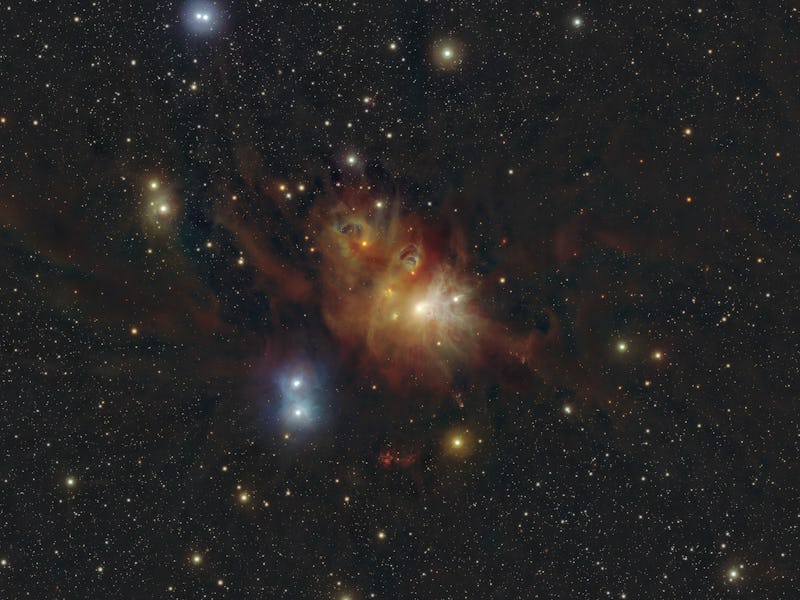Stunning Mosaics Piece Together Previously Unseen Details of Star Birth
A 5-year survey probed the secrets of star formation — and captured gorgeous images.

Though nebulae host swaths of bright stars, they still find a way to obscure their secrets.
Thick dust and gas clouds, which are the lifeblood of these stellar nurseries, cast a murky haze over newly-forming stars. At visible wavelengths, dust seems to cover all. But some telescopes can view nebulas at infrared wavelengths to cut through the haze.
New infrared mosaics of five stunning star nurseries were released by the European Southern Observatory today, showcasing the finer details of how stars are born. These regions are located in the constellations Orion, Ophiuchus, Chamaeleon, Corona Australis, and Lupus.
The Coronet star cluster, which is located in the Corona Australis constellation, boasts a colorful array of light that gives birth to new stars.
Young stars, engulfed in gas and dust, make up the Lupus 2 star-forming region.
Each image shows dramatic clouds streaking against the backdrop of distant stars and galaxies. Young stars look like studded, multicolored gems embedded in each nebula, their light scattered by thick dust and gas.
It’s a stark difference from how things look at visible wavelengths, with dark dust often obscuring light from the youngest stars altogether.
The Lupus 3 star-forming region in visible light (left) and infrared light (right).
The snapshots were produced during a scientific survey, called VISIONS, where researchers studied these regions and detected some of the youngest and smallest stars swaddled in nebula dust. Between 2017 and 2022, they captured 1.15 million individual images of the star nurseries, as detailed in a report published today in the journal Astronomy & Astrophysics.
Through that five-year period, scientists tracked how young stars shaped and emerged from the clouds they were born in.
“In these images we can detect even the faintest sources of light, like stars far less massive than the Sun, revealing objects that no one has ever seen before,” said Stefan Meingast, an astronomer at the University of Vienna in Austria, in a statement. “This will allow us to understand the processes that transform gas and dust into stars.”
Light streaks through the clouds of the HH 909 A star-forming region in the Chamaeleon constellation.
Red and orange stars emerge in the clouds of the IRAS 11051-7706 object.
Creating detailed mosaics of each star-forming region could help researchers uncover the finer details of how stars are formed. Big questions remain about the amount of stars each nebula can produce, how big stars can get, and which stars are able to host planets.
Understanding the origins could shed light on the beginnings of our own Sun and its planets — and help us find star systems that may have looked like a younger version of our own Solar System.
This article was originally published on